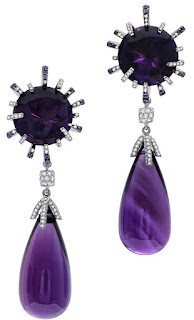 | The Chevrolet Corvette is a sports car manufactured by the Chevrolet division of General Motors. The car has been produced through seven generations.
The first model, a convertible, was designed by Harley Earl and introduced at the GM Motorama in 1953 as a concept show car. Myron Scott is credited for naming the car after the type of small, maneuverable warship. | 
The first Corvette went into production in Flint, Mich. on June 30, 1953. |
The 1954 model year vehicles could be ordered in Pennant Blue, Sportsman Red and Black, or Polo White. 3,640 were built, and sold slowly.

1956 Corvette | The 1958 Corvette received quad headlamps, bumper exiting exhaust tips and a new steering wheel. The 1959–60 model years had few changes except a decreased amount of body chrome and more powerful engine offerings. |  |
 | In 1961, the rear of the car was completely redesigned with the addition of a "duck tail" with four round lights. The second generation (C2) Corvette introduced the Sting Ray. Production started for the 1963 model year and ended in 1967.
 |
 | The third generation Corvette was introduced for the 1968 model year and was in production until 1982. Styling changed subtly throughout the generation until 1978 for the car's 25th anniversary.
 | |
 | Regular fourth generation production began on January 3, 1983. Beginning in 1985, the 230 bhp (170 kW) L98 engine with tuned port fuel injection became the standard. Chevrolet released the Grand Sport (GS) version in 1996 to mark the end of production of the C4 Corvette.
 |
 | Production of the C5 Corvette began in 1997 and ended with the 2004 model year. The C5 had a top speed of 181 mph (291 km/h) and was judged as improved in nearly every area over the previous Corvette design. |  |
 | The sixth generation-C6 was produced between 2005 and 2013. The 6.0L (364 cu in) LS2 V8 produced 400 bhp giving the vehicle a 0–60 time of under 4.2 seconds. Its top speed was 190 mph (310 km/h). |  |
 | The seventh generation corvette, the 2016 Chevrolet Corvette Z07 was officially unveiled at the 2015 Detroit Motor Show. Pricing of the Z07 is expected to be around $100,000.
 |
 | The 2016 Corvete Z07 will have two engine variants. The first is a 4.5 liter twin-turbo generating up to 500 horsepower. The second will be a 6.2 liter V8 producing over 600 horsepower.
Both engines will be mated with the seven speed Tremec TR-6070 manual transmission and an eight speed Hydra-Matic automatic transmission. |  |

































































